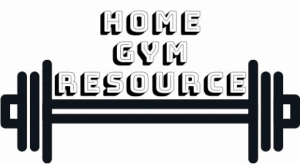When you originally purchased your treadmill, you probably thought the most significant issue would be whether or not you’d put it to regular use. You never anticipated the massive inconvenience involved in moving the thing! Though treadmills come in various sizes, they tend to be bulky, averaging between 200 and 300 pounds (90.7 and 136 kg), making them a nightmare to move even short distances.
The best way to move a treadmill is to remove the console, console frame and side rails from the treadmill. That way the deck has a flat surface which is much easier to maneuver and lighter. A dolly or furniture mover makes the process much less strenuous.
While you might be tempted to just pick up the treadmill and move it, it’s usually a bad idea, unless you want to move it inside the room. Read on to learn the best way to move a treadmill safely and how to know if something has gone wrong.
Contents
How To Move a Treadmill
When moving any large equipment or furniture, it pays off to think ahead and prepare. While it may feel unnecessary to take the additional time when simply moving your treadmill from one room to another, the lasting damage you may cause to your back, equipment, or house is in no way worth the saved time.
Looking for a good spot to put your treadmill? Click here for a breakdown of the best places.
Plan Ahead
Start by planning where you’re going and the route. Measure doorways, remove obstacles, and look where it could be tight and how you can maneuver in those spots.
Knowing where the treadmill can fit easily and where not helps you to be prepared.
The next step is to check your treadmill.
Start by examining the equipment to gauge how much effort may be required to move it. How large is it? Does it come in multiple pieces? How sensitive is the technology involved?
You can find a lot of the specifications for treadmills online. You’ll find dimensions and more importantly, the weight.
Also check if the treadmill deck can fold up, if parts can be removed, and which parts are important to protect when moving it around.
If you just discovered your treadmill folds up and has wheels; congratulations! While you may still need another person there to help with the weight of the equipment, your moving process just became much more straightforward. Just fold up the treadmill, clear a path, and relocate it. Remember that, even if you lucked out with wheels, it’s always important to wrap the equipment in packing material to protect it if you are moving houses. Wheels also won’t help you much if you have to deal with stairs.
Suggested: How to safely store a treadmill
Unplug & Dissasemble
The reality is, most of the time it’s difficult to get a fully assembled treadmill moved from one spot to another, let alone down or up the stairs. You’ll have a much easier time taking off the console and side rails from the treadmill. That way the deck is a flat object, which is much easier to move around.
Be careful when removing the console from the treadmill, this is a sensitive part and should be treated like you would a computer or laptop.
Usually the siderails and console come off with a few screws that aren’t difficult to get to. The user’s manual of your treadmill will show you where you can find them.
Prepare To Move
When preparing to move your equipment, you need to judge your next steps based on how your treadmill functions and what path you have to take to get to the new spot.
While not all treadmills are quickly taken apart, it may be a good idea to do so if moving the equipment far distances or upstairs. In disassembling your treadmill, you lower the amount of weight each person is responsible for carrying at a given time. Save yourself the trouble of misplacing important pieces by clearly labeling them and keeping all screws and bolts together in a Ziploc bag.
If your treadmill folds, this is a great time to utilize that feature. To protect the control panel, use bubble wrap to surround the more sensitive parts of the equipment. Using clinging stretch wrap, you can also secure the base to the arms that connect to the control panel; doing so will protect you from falling equipment if the small piece holding up the base snaps.
Heavy equipment is inevitably going to run up against a wall or person at some point in this process. Wrap any jagged edges or metal pieces in bubble wrap before moving to prevent damage or injury. While it may feel like overkill, this is yet another moment in moving your treadmill where it is far better to be safe than sorry.
Suggested: 7 Ways to hide a treadmill in a room
Wrap The Individual Parts
To prevent damage during the move, it’s essential to protect the treadmill’s components, especially if you’ve disassembled it:
Use Packing Materials: Wrap the individual parts in packing materials like bubble wrap or moving blankets. This safeguards the treadmill from scratches and dings during transit. It also helps protect doors and walls if you were to bump into them.
If you’re just moving the treadmill to a different room, this might not be necessary but if you’re moving house, you should absolutely wrap your treadmill.
Use a Dolly
Here’s the part where you likely need someone to help you. Even disassembled, treadmills are large and heavy. While with the help of a dolly, you could do it alone, the chances of something going wrong are large.
A flat dolly or furniture mover is going to be a massive help. You’ll just have to lift the parts a little bit to get it onto the dolly instead of all the way. While you can easily call a friend to help you move heavy equipment, it may still be in your best interest to use a dolly. Your friend can help keep the load stable and help maneuvering which is difficult alone.
Using two dollys can be ideal for heavy treadmills. Using two makes things much more stable and thus easier to move around.
If you have to go down or up the stairs, a dolly won’t help you. Old school muscle power will be required.
Reassemble and Test Out
As soon as the equipment has been relocated, it’s a good idea to reassemble the treadmill and test it out immediately. Be sure that the control panel is still functioning and the equipment feels steady as you run.
When moving sensitive equipment, especially without the help of a professional, it’s common for some of the most fragile elements to encounter damage. While you certainly never hope that’s the case, if something went wrong in the moving process, it’s better to find out now rather than a week later. Nothing would disrupt your run quite like a surprise malfunction!
For one example of how to easily move a treadmill, watch this short video:
Safety Guidelines
To avoid potential back damage, always move with caution. According to the University of North Carolina, back pain caused by unsafe handling of heavy objects was the leading cause of workplace injuries. Over thirty-six percent of missed workdays involved back pain, most of which were caused by poor lifting techniques.
Heavy, awkwardly shaped objects like treadmills make for strenuous lifting. When moving this or any other heavy equipment, keep in mind the following guidelines:
In general, the key to safely and carefully lifting heavy objects is to plan each step in advance, especially when working with others. Know where you will move the treadmill, the path you will take, and how you will attempt to do so before ever picking the item up.
Moving a Treadmill: Frequently Asked Questions
Moving equipment can be a stressful experience, and the etiquette around doing so is foggy at best. Read on to see a few more common questions regarding moving your treadmill.
Should I Ask Someone To Help?
Even if you have the assistance of a dolly, it’s a good idea to have a second person present when moving heavy equipment. However, if you plan on moving your treadmill further than just across the house, it may be best to call professional movers. There’s a fine line between an easy favor and taking advantage of a friendship.
According to The Etiquette School of America, when asking for help moving, it’s best to be clear in your expectations and honest about the work involved. For example, if you expect that this project may take all day, don’t tell your friend that you’ll be done within a few hours. When asking for a favor, give them an easy out and be understanding if they are unable to help.
Should I Tip the People Helping Me?
While tipping movers is encouraged, they don’t necessarily expect it from you. Moving is indeed hard work, but your movers are compensated for their hours worked. This means that, unlike certain service industry members, movers do not depend on your tips for the bulk of their income.
If your friends or family members helped in the process, offer to return the favor either by purchasing dinner or through some other act of service. See if they need anyone to walk their dog or help with yardwork. Don’t skimp out by merely offering a lukewarm pizza and flat soda!

Where Can I Get Packing Materials?
Packing materials can easily be purchased at office supply stores or hardware stores nearby. If you are on a budget or looking out for the environment, try looking online at sites like Craigslist or Freecycle. Often, you’ll find other people like yourself who have just finished moving and are more than happy to offer what they didn’t use.
For boxes, simply ask around! Most retail stores receive more cardboard boxes than they can use. Liquor stores in particular require a daily influx of large, sturdy boxes. No one likes spending money, and you’ll find that, in most cases, people are more than willing to help someone who politely asks for assistance.
Can I Rent a Dolly?
You can rent a dolly at any Uhaul location for a low price, in many cases less than ten dollars. If you aren’t near a Uhaul center, many hardware stores including Home Depot and Lowes offer equipment for rent by the day. Ask to speak to the manager for information regarding rates.
Can I Put a Treadmill on the Second Floor?
You can put a treadmill on the second floor only if the floor is in sound, sturdy condition. In an adequately zoned house, each square foot should be able to carry between forty and fifty pounds. Even with a large treadmill, you shouldn’t have any problems, assuming you can safely carry it.
Conclusion
Moving a treadmill is not a challenging endeavor, but it could be dangerous if you don’t take the proper safety precautions. Always remember to plan out all your movements in advance, break the treadmill down into smaller, easier-to-handle pieces, and use equipment to make the process easier.
When it comes to moving heavy equipment, it is always important to be safe rather than sorry. Save your back, and follow every precaution when moving your treadmill!
